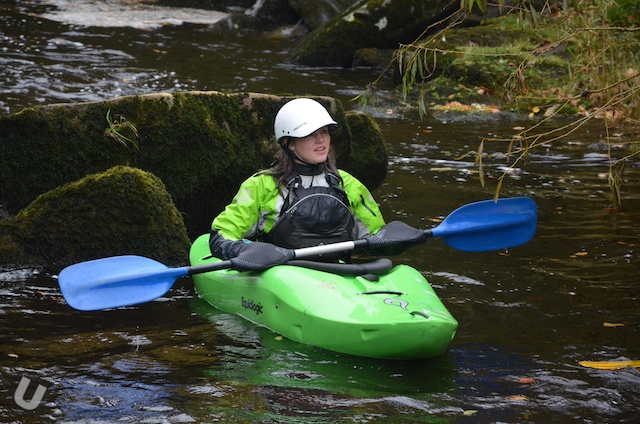I reckon cold hands are almost worse than cold feet. When my hands get cold they hurt and as they warm back up they really hurt. If the air and water temperature isn’t too bad then I’ll go through the pain barrier as once my hands are warm they’ll stay warm.

However if it is super cold then its hard to push through the pain barrier as it takes so much longer. Cold hands will limit your ability to hold stuff. If you aren’t able to hold your paddle then you are pretty stuffed.

A number of manufacturers produce both gloves and pogies that are designed to your hands warm even if they get wet.

Some paddlers like gloves but some times they can feel a little bulky and can make holding the paddle more difficult. Gloves tend to be made from neoprene and are designed to work just like a wetsuit, i.e. they work better when wet. Many years ago I got hold of a pair of Typhoon neoprene gloves that worked fantastically and still have them in my kit bag.

The other main option is to try some pogies. Made out of neoprene or nylon pogies wrap around the paddle and allow you hold it as normal. The pogies fasten onto the paddle shaft using Velcro and fit snuggly around the paddle helping to keep water out. Getting the pogies on your hands is always fairly straight forward for pogie number one but as always is a little harder when getting the second one on.

Pogies come in at various different prices depending on if they are simply unlined waterproof nylon to fully lined and almost fully sealed numbers. Check out Palm, Peak UK, or Lomo.
Palm, Immersion Research, NRS, LOMO and Shred Ready make some really good neoprene pogies that are warm even when wet and can really help keep wind chill off your hands.
One of the main concerns people have about pogo is how easy it is to release your hands if you need to leave your boat and pull your deck strap. The opening to the pogies on all of designs I have used have never been tight, so the only thing keeping your hands in the pogies is your own grip on the paddle. If you let go you can pull your hands free.

We’d be really interested to know what you use. Let us know via the comments section below.




I use Palm descent pogies when it’s super cold or peak open palm mitts when it’s not as cold!
How about just manning the xxxx up!
Not a bad idea until the point where you can no longer hold the paddle.
Loosen your grip, especially with the top hand as you paddle. Almost open your top hand fully as you push it through the top of your stroke. The opening and closing increases blood flow to your hands and helps keep them warm. Too tight a grip and you’ll reduce blood flow. With warm hands you can then get a good grip when you actually need it.
Stohlquist produce neopren gloves
If you’re out there when it’s so darn cold that you’re losing functionality in your hands, no amount of toughing it out will solve a physical limitation. Personally I’ve had decent luck with the big bulky gloves in those conditions. When I’m faced with reduced paddle control I try to remember that it’s a paddle, not a paintbrush, and pretty good is usually good enough. I also avoid paddling in situations where perfect paddle control is mandatory and do less aggressive kayaking.
Herby from Germany, I paddle since 30 years also in winter, all kind
of rivers, calm or whitewater, I use pogies. My advice is to put them to the paddle bejor you paddle and use normal winter gloves for preparing your kayak, clothes , sit in your kayak and just befor paddling Change from gloves to pogies 🙂 so you will have warm fingers the whole time. BR Herby